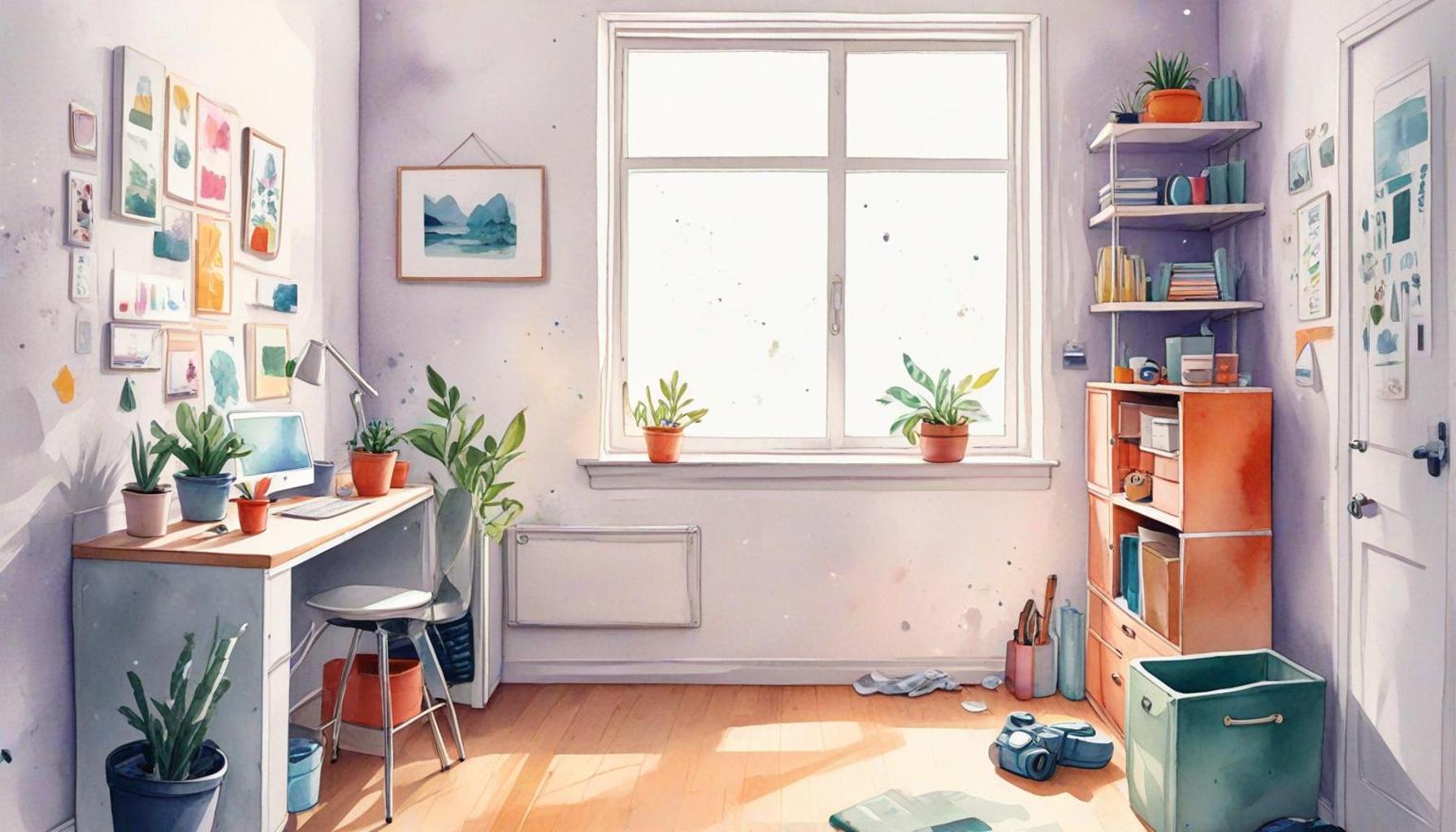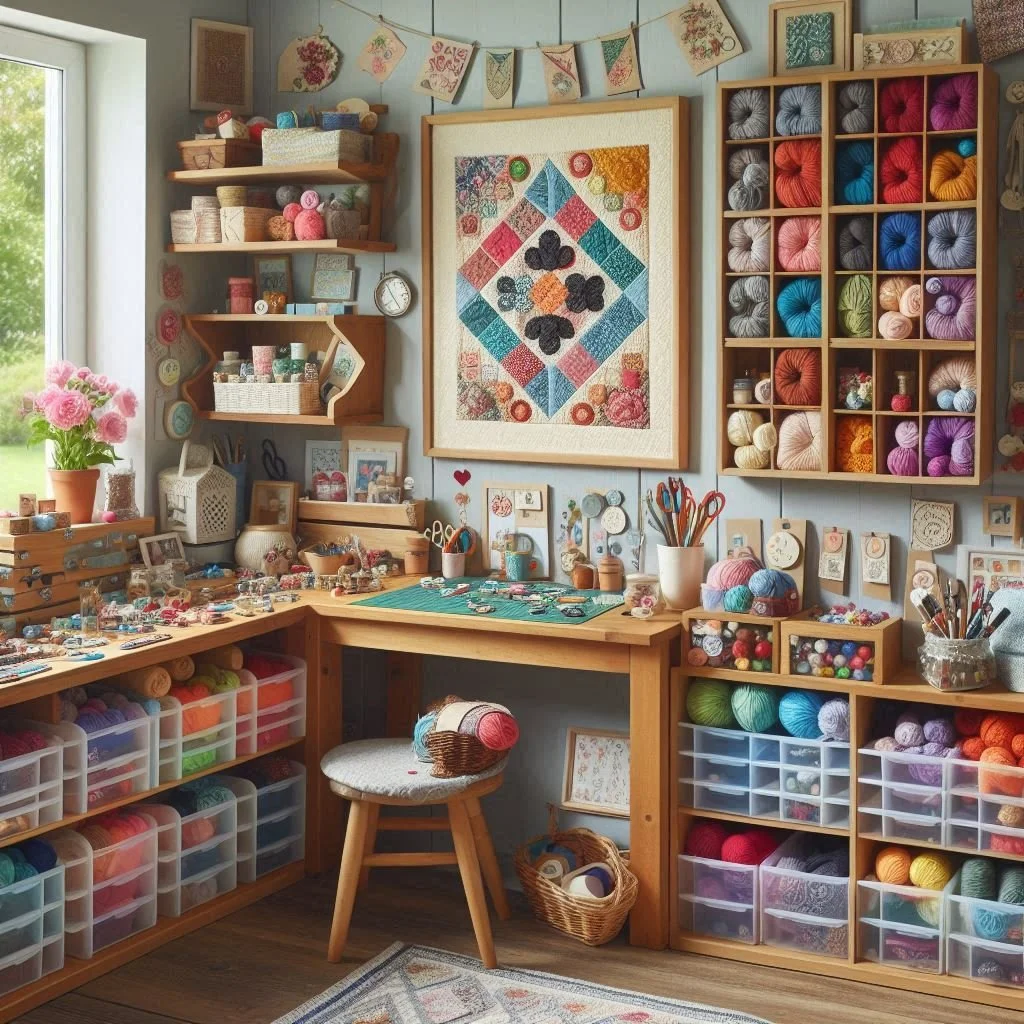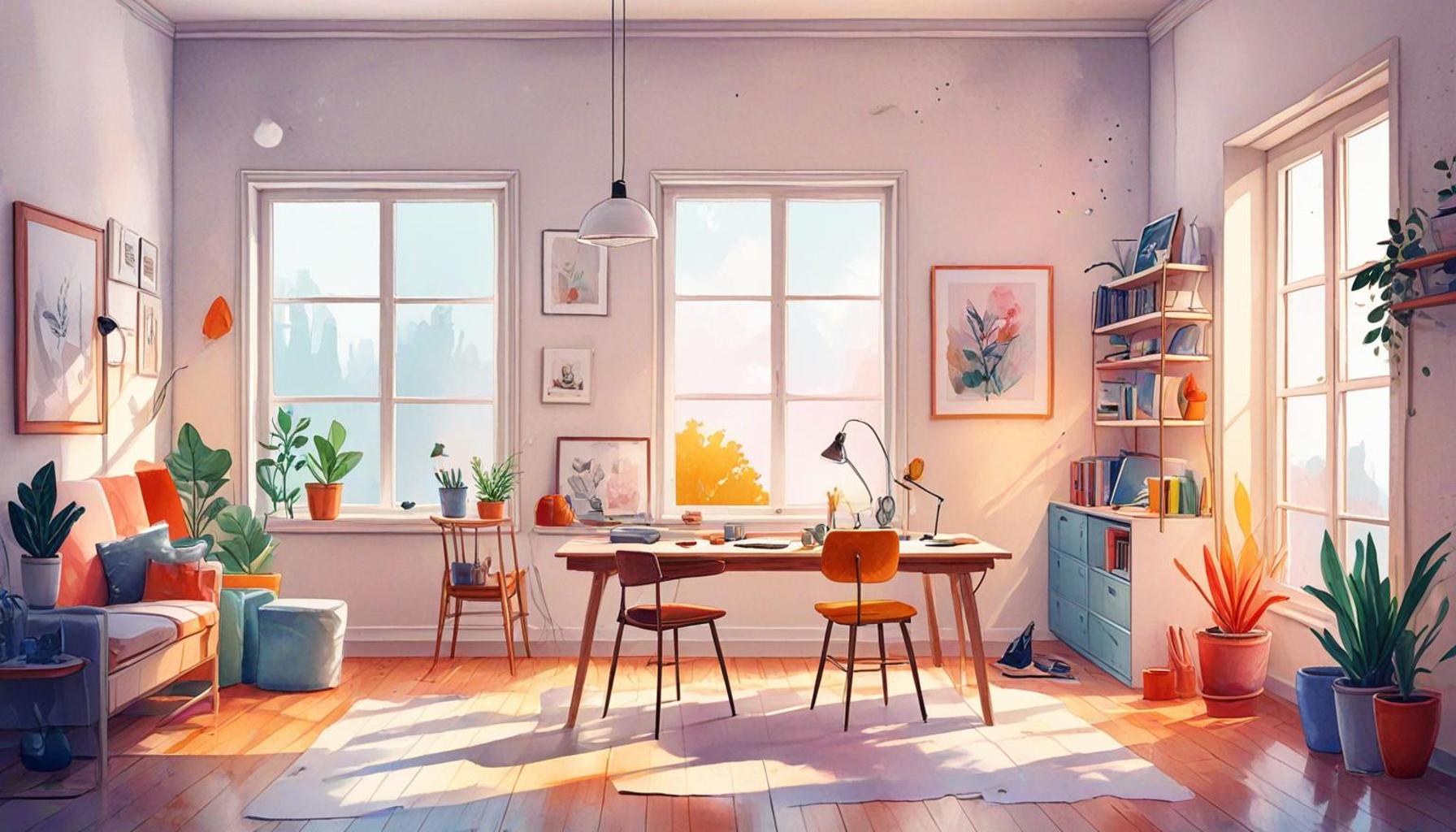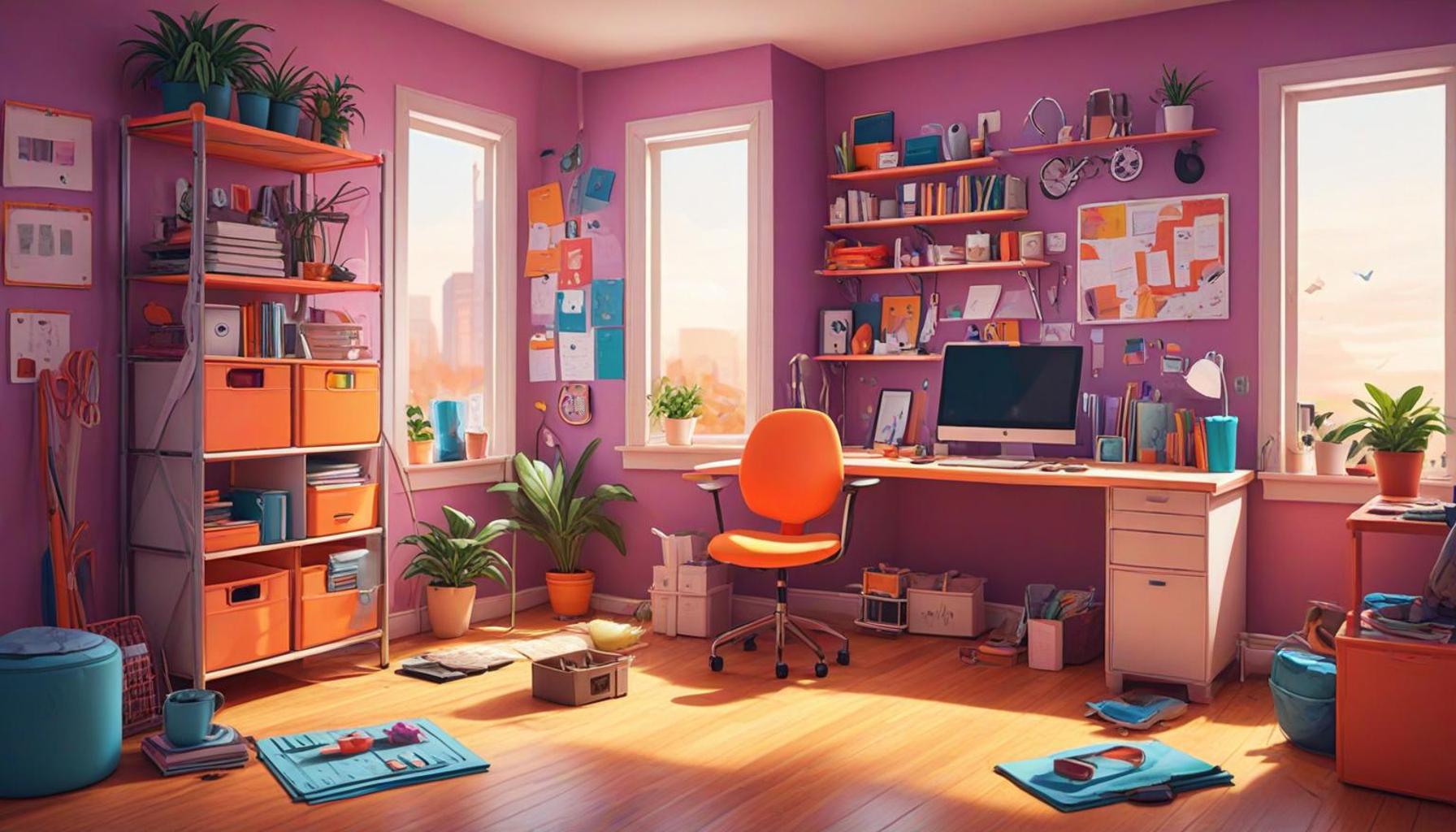Maximizing Space in Small Environments: Minimalist Organization Strategies

Finding Zen in Limited Spaces
In today’s fast-paced world, many Americans find themselves living in smaller homes or apartments, where every square foot counts. The desire for a clutter-free life often leads to the practice of minimalism, which focuses not just on reducing possessions but also on creating functional spaces. As the tiny living trend gains momentum, it becomes essential to explore organization strategies that truly maximize space.
Keys to Minimalist Organization
Adopting a minimalist approach can transform your small environment into an oasis of peace and functionality. Here are some effective strategies to consider:
- Declutter regularly—eliminate items that no longer serve a purpose. This could include clothing that hasn’t been worn in over a year, kitchen gadgets that clutter countertops, or books that you are unlikely to reread. Consider implementing a seasonal decluttering routine to maintain control over your belongings.
- Utilize multifunctional furniture, such as ottomans with storage or foldable tables. For instance, a small dining table that folds down when not in use can save significant space coupled with benches that can be tucked away. Modular furniture that can serve different functions as your needs change is also a smart investment.
- Create vertical storage solutions like shelves or wall hooks to free up floor space. Installing floating shelves in the kitchen for spices or hanging plants can enhance both aesthetics and utility. Consider wall-mounted bike racks or pegboards in entryways, turning walls into functional storage, thus maximizing your square footage.
Beyond these tips, the concept of mindful consumption plays a significant role in maintaining an organized environment. Instead of accumulating more, ask yourself if each new item contributes to the serenity of your space. This could mean favoring quality over quantity—consider investing in classic and timeless pieces that offer longevity rather than fast fashion items that contribute to clutter.
The rise of the minimalist movement has prompted a reevaluation of how we view our possessions and living environments. People are increasingly recognizing that experiences often bring more happiness than material things. Incorporating plants, natural light, and a harmonious color palette can invite tranquility into cramped quarters. Even minimalistic art pieces can evoke a sense of calm and serve as conversation starters.
This article will delve deeper into minimalist organization, offering both inspiration and practical tips for turning cramped quarters into harmonious sanctuaries. By calibrating your lifestyle to embrace simplicity, you can create a living space that not only looks good but feels good—a true reflection of your personal peace.

DISCOVER MORE: Click here for innovative space-saving ideas
Embracing the Power of Simple Design
To truly maximize space in small environments, it is important to adopt a mindset that prioritizes simplicity and thoughtfulness in design. The principles of minimalist organization can help you achieve a more efficient and serene living space. By embracing the notion that less is more, you can create an atmosphere that enhances your daily life without the burden of excess.
Essential Minimalist Principles
Applying minimalist principles can lead to a dramatic transformation in how you utilize your space. Below are some key strategies for effective minimalist organization:
- Establish a Purpose for Each Area – Every room should have a function that aligns with your lifestyle. Whether it’s a cozy reading nook or an efficient home office, specifying the purpose of each area allows you to tailor your belongings accordingly, ensuring everything has a designated spot.
- Incorporate Built-In Storage – If possible, consider investing in built-in shelving or cabinetry that fits seamlessly into your environment. These types of storage solutions can maximize vertical space while maintaining the overall aesthetic of your home. Built-in furniture can serve dual functions, such as a bench that also provides storage for seasonal items or a daybed that acts as seating and sleeping space.
- Reassess Your Wardrobe – A wardrobe overhaul can free up both physical space and mental energy. Implement a capsule wardrobe approach by curating versatile clothing items that can be mixed and matched. This not only minimizes clutter in your bedroom but makes daily outfit selection more efficient.
- Organize with Clear Containers – Utilize clear bins or boxes for storage, allowing you to quickly identify the contents without rummaging through various containers. Labeling each box can aid in maintaining organization and streamlining tasks such as finding holiday decorations or seasonal clothing.
While these strategies may seem straightforward, the impact of a well-organized space can be profound. Research suggests that clutter can lead to stress and reduced productivity, making it essential to cultivate an environment that promotes clarity and calm. In fact, a survey by the National Sleep Foundation found that 75% of respondents acknowledged a link between cluttered environments and increased anxiety levels.
Moreover, it is crucial to develop a sustainable approach to minimalism by incorporating mindful consumption into your life. This means making conscious decisions about what enters your space. Before a purchase, consider whether the item will enhance your life or simply add to the chaos. Investing in quality items, rather than quantity, not only reduces clutter but fosters a more meaningful relationship with your belongings.
The journey to maximizing space through minimalism is about more than just organization; it’s about understanding the intrinsic value of simplicity. As you begin to implement these strategies, you’ll likely notice not only a tidier living area but also a greater sense of peace in your daily routine. Discovering the elegant balance of function and beauty in small environments can lead to a fulfilling lifestyle, creating a haven from the chaos of the outside world.
| Category | Description |
|---|---|
| Maximizing Vertical Space | Utilizing walls for storage through shelves and hooks allows for efficient use of space. |
| Multi-Functional Furniture | Incorporating sofas with storage, collapsible tables, or beds with drawers optimizes usability without clutter. |
The power of maximizing vertical space cannot be overstated, especially in environments where every inch counts. By installing shelves and hooks high on the walls, one can achieve a clean aesthetic while keeping essential items accessible. Consider how a well-placed bookshelf or decorative shelf can not only hold books or art but also create an illusion of height, making the room feel less cramped.Moreover, the trend of multi-functional furniture is on the rise. Investing in pieces like ottomans that open for storage or extendable dining tables not only provides practical solutions but also infuses style into small living spaces. These designs cater to both aesthetic pleasure and organizational needs, allowing one to maintain a minimalist approach amidst the demands of everyday life. By focusing on these strategies, individuals can achieve a serene environment that embodies both function and beauty.
DISCOVER MORE: Click here to learn about the emotional benefits of decluttering
Utilizing Multi-Functional Furniture
When space is limited, utilizing multi-functional furniture becomes a pivotal strategy in maximizing your small environment. This type of furniture serves more than one purpose, allowing you to reduce the number of items cluttering your space while also providing additional functionality. For instance, a sofa bed not only serves as comfortable seating but can easily convert into a sleeping area for guests, eliminating the need for a separate guest room.
Key Benefits of Multi-Functional Furniture
Investing in multi-functional furniture can transform your living space in several significant ways:
- Enhanced Flexibility – By choosing items that can adapt to different tasks, you open up new possibilities for how you use your space. Foldable tables can be expanded for dining but collapsed to create more floor space when not in use.
- Increased Storage Options – Many multi-functional pieces come with built-in storage solutions. Ottomans with hidden compartments or coffee tables that lift to reveal storage can help you keep everyday items tucked away but easily accessible.
- Streamlined Aesthetics – With less furniture scattered throughout your space, your home can feel more cohesive and organized. Minimalist furniture designs often incorporate clean lines and modern materials, contributing to an uncluttered look that is visually appealing.
Moreover, according to a study conducted by the American Institute of Architects, a majority of homeowners prefer designs that incorporate adaptability and flexibility in their living spaces. This trend signifies a move towards embracing functionality over traditional aesthetics, making multi-functional furniture not just a trend, but a necessity in small environments.
Rethinking Your Layout
The layout of your space is crucial to maximizing its potential. A well-thought-out floor plan can open up a small area, enhancing both functionality and flow. Here are some techniques to consider:
- Define Zones – Use rugs or lighting to define different areas within a single room. For example, a rug can delineate a cozy living area within a larger studio space, giving it a sense of compartmentalization without the need for physical walls.
- Opt for Open Shelving – Open shelving not only provides display space but also gives the illusion of a larger area by keeping things visible and airy. This concept works particularly well in small kitchens or living spaces, where closed cabinets can feel bulky and constricting.
- Furniture Arrangement – Experimenting with furniture arrangement can lead to surprising advantages. Placing larger items against walls can create an open central area, improving traffic flow and making your space feel less cramped.
Additionally, a survey from the National Association of Home Builders found that 70% of homeowners feel that a well-structured space improves their overall quality of life. This emphasizes the importance of layout in creating an environment that is not only efficient but also emotionally satisfying.
Ultimately, the key to maximizing space lies in intentional design choices that prioritize both form and function. By incorporating multi-functional furniture and making strategic adjustments to your layout, you can transform your small environment into a well-organized haven that fuels creativity, productivity, and relaxation.
DISCOVER MORE: Click here for valuable decluttering tips
Conclusion: Embracing Minimalism for a Spacious Feel
In the quest for maximizing space in small environments, minimalist organization strategies emerge as a powerful ally. Through the intentional use of multi-functional furniture and thoughtful layout reconfigurations, individuals can significantly enhance the functionality and aesthetics of their living spaces. These strategies not only help to declutter but also create a harmonious atmosphere that fosters tranquility and creativity.
As surveyed homebuilders reveal, a well-structured space can profoundly influence well-being, making it essential to engage in spatial re-evaluation. Embracing concepts like open shelving and defining zones within a room can lead to a newfound sense of flow and openness, allowing even the smallest spaces to breathe. This shift toward minimalist design doesn’t merely function as a trend; it reflects a broader lifestyle choice prioritizing simplicity over excess.
Furthermore, the appeal of minimalism encapsulates a holistic approach to living that encourages sustainability, fostering a mindful relationship with our possessions. By prioritizing quality over quantity and investing in versatile furnishings, we can achieve a balance between aesthetic pleasure and practical needs.
Ultimately, maximizing space in small environments is not merely about fitting more items; it’s about creating a purposeful sanctuary that enhances our daily lives. With these minimalist strategies in hand, you are now equipped to transform your compact space into a functional and inspiring haven. As you embark on this journey, remember that every square foot holds potential — it’s time to unlock it.



